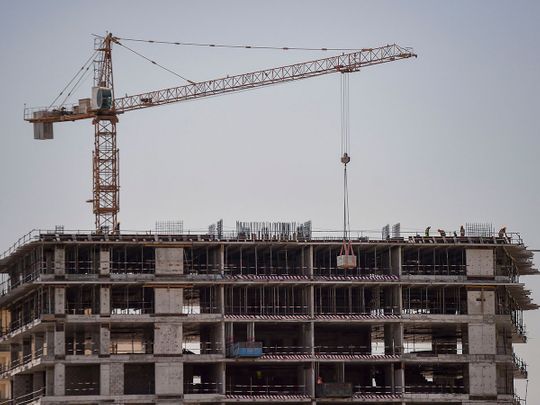
The UAE construction and contracting sector is still suffering from the after effects of the liquidity crunch and which intensified with the onset of COVID-19.
Initiatives by the government have helped from preventing an even worse outcome – however, the structural issue of post–handover payment plans with higher discounts upfront being offered to the customer have meant there has been delayed payments that continue at the backend. Despite overhead costs getting reduced in terms of rents, there has been increased pressure on margins based on the cost of raw materials having risen.
This implies that there is likely to be some more pain in this sector as further consolidation and debt restructurings are undertaken. Banks will undoubtedly continue to play a role, but given the uncertainty surrounding some of the smaller players, other factors that need to come to the fore as the landscape evolves.
Pivotal for economy
From a macro perspective, the construction sector has a fiscal multiplier effect of between 2.7 and 2.9 times depending on the stats that are taken into account from a value added perspective. This illustrates not only the importance of the sector in the role that it plays for the overall economy, but given that urbanization is likely to continue, the multiplier levels are set to increase, especially as capital is infused into newer mid-income projects and the investor base starts to broaden.
The recent emphasis on ready properties in terms of transactions serves to highlight the emerging role of newer sectors of the economy that will develop over the next five to 10 years. It is, however, the offplan sector where capital will ultimately flow to the contractors, many of which were caught in the perfect storm of stalled projects/delayed payment plans and the impact of Covid.
Capital issues
Under-capitalized firms have been the most hard hit, but historically, this has always been the case with contracting companies that have been held hostage to raw material prices at one end and the fate of the price cycle at the other. Extrapolating from this variable, the most obvious conclusion is for firms to either increase their working capital (this is already happening with new entrants) and/or alternatively getting some sort of further relief measures from the government that allows for more breathing space.
If we move along this axis of thinking, then it leads to some sort of integration between developers and contractors as well in order to optimize cashflow management, such that risk sharing is made more palatable. Litigation enters the fray here with arbitration centers playing a role in smoothening issues of conflict in a manner where there is no disruption to the project (which is where the real value is unlocked for all the players). And the regulator acts as a facilitator to ensure that stalled projects are repackaged to new investors in as seamless a manner as possible.
Show the way forward
Lessons can be gleaned from the Arabtec case study as well as Drake & Scull, where completely different outcomes were arrived at and utilized as tools for other dispute resolution issues. To be sure, there have been positive steps taken place in all of these directions and it is likely that this momentum will continue.
What we are witnessing is a shape shifting of the industry, and the challenge that has to be overcome is that the multiplier effect (which will reduce the greater the number of stalled projects) continues to remain at least the same level if not rise.
This multivariate problem solving can only be achieved with a symbiotic relationship between lawyers, regulators, government officials and the private sector. Dubai has been a pioneer in the ‘one window’ operation sphere, which has made it one of the most attractive destinations for investment.
As we move into the next calendar year, it would be interesting to see how these variables are brought together such that the various moving parts start to cohere.









